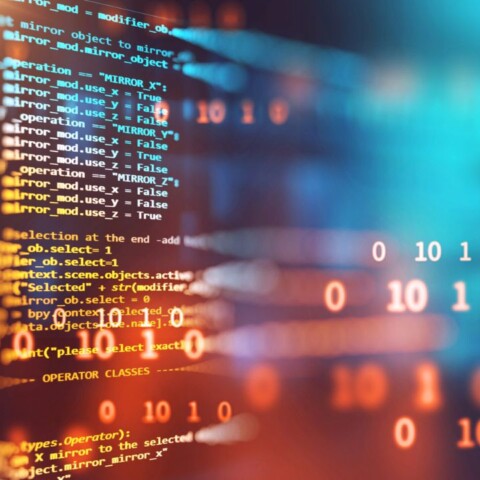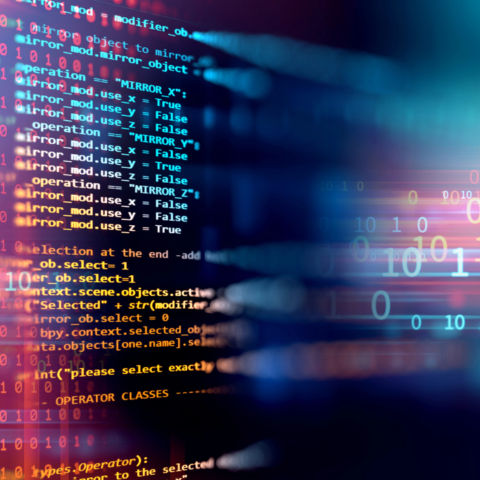Summary
SurfaceBook Studio Laptop REVIEW
PAT PILCHER reviews a laptop that’s created with the creative types of the new millennium in mind, and it’s a doozy.
From $2599
 Here’s the thing. The way we use personal computers has changed fundamentally over recent years. Not so long ago, most of us checked email, pulled up web content, crafted documents and played the occasional game. Nowadays, we’re still consuming content, but many of us are creating digital content too. From digital art and photo/video editing to posting web content, the way we use PCs continues to evolve.
Here’s the thing. The way we use personal computers has changed fundamentally over recent years. Not so long ago, most of us checked email, pulled up web content, crafted documents and played the occasional game. Nowadays, we’re still consuming content, but many of us are creating digital content too. From digital art and photo/video editing to posting web content, the way we use PCs continues to evolve.
None of this has been lost on Microsoft’s Surface design team at Redmond. They’ve just launched the 14-inch Microsoft Surface Studio Laptop. It effortlessly bridges the gap between content consumption and creation and has some pretty clever stuff baked in too.
Would you like to support our mission to bring intelligence, insight and great writing to entertainment journalism? Help to pay for the coffee that keeps our brains working and fingers typing just for you. Witchdoctor, entertainment for grownups. Your one-off (or monthly) $5 or $10 donation will support Witchdoctor.co.nz. and help us keep producing quality content. It’s really easy to donate, just click the ‘Become a supporter’ button below.
The big giveaway here is the name: Surface Laptop Studio. Where its predecessor, the Surface Book 3, had a screen that became a tablet by detaching from the keyboard, the Studio’s screen, (like a laptop’s), can’t separate. Still, it can be pulled forward to create an easel or even laid flat for a tablet-like experience.
 This isn’t exactly a new idea. Acer pioneered the concept, but Microsoft has taken the model and made it eminently more polished. Early pull forward screen designs were bulky and fiddly. While the Studio laptop mightn’t qualify as an Ultrabook, it is easily petite enough to put in a laptop bag and carry about. Unfurling its screen into easel or tablet mode feels effortless yet robust.
This isn’t exactly a new idea. Acer pioneered the concept, but Microsoft has taken the model and made it eminently more polished. Early pull forward screen designs were bulky and fiddly. While the Studio laptop mightn’t qualify as an Ultrabook, it is easily petite enough to put in a laptop bag and carry about. Unfurling its screen into easel or tablet mode feels effortless yet robust.
Design-wise, the Studio laptop sports a familiar design language that’ll be immediately recognisable to Surface book fans. Its chassis is finished in surface book magnesium grey. As you’d expect from Microsoft hardware, there’s a shiny Microsoft logo on its lid.
The Surface Studio Laptop has a 14-inch display, which is the current sweet spot for a growing number of laptops. The big takeout with the Studio Laptop is that it has broad appeal and is squarely aimed at the hearts and wallets of both creatives and ordinary laptop users.
 The foldable, pull-forward screen design confers some practical advantages on the Studio over its earlier SurfaceBook 3 sibling. While the SurfaceBook 3 could convert into a tablet, it did so at the cost of functionality. With the Nvidia GPU and one of its batteries located in its keyboard, detaching the SurfaceBook 3’s screen meant closing any apps using the GPU and making do with shorter battery life.
The foldable, pull-forward screen design confers some practical advantages on the Studio over its earlier SurfaceBook 3 sibling. While the SurfaceBook 3 could convert into a tablet, it did so at the cost of functionality. With the Nvidia GPU and one of its batteries located in its keyboard, detaching the SurfaceBook 3’s screen meant closing any apps using the GPU and making do with shorter battery life.
Because its screen folds rather than detaching, the Surface Studio Laptop has none of these problems. Switching to easel mode (or “stage mode” as Microsoft calls it) involves pulling its screen forward, where it magnetically locks into place.
Stage mode is intended for use with a stylus. It feels solid, and there is no screen flexing, which is an issue afflicting many convertibles when using a stylus. Scribbling with a stylus is one use. Watching content is another. Pulling the screen forward means that its keyboard is out of the way, so there are no distractions to the screen.
 In addition to stage mode, pulling the screen further forward sees it converting into a tablet (which Microsoft calls studio mode). This sees the display lying flat and magnetically locking into place. While the Studio is heavier than most tablets, its display has some cool tricks up its AMOLED sleeve.
In addition to stage mode, pulling the screen further forward sees it converting into a tablet (which Microsoft calls studio mode). This sees the display lying flat and magnetically locking into place. While the Studio is heavier than most tablets, its display has some cool tricks up its AMOLED sleeve.
First and foremost, the display has a 120Hz screen refresh rate. Considering laptop screen refresh rates hardly ever top out above 60Hz, it makes a huge difference to gaming and using a stylus. Using the new Surface Slim Pen 2, drawing, signing and note-taking are super responsive. Then there’s the usual Microsoft 3:2 aspect ratio, a 2,400 by 1,600-pixel resolution, plus 485 nits of brightness. In short, there’s plenty to like. While Its bezels are skinny the corners of the display are rounded, which means there are phantom pixels in the corners. The display cranked out the entire sRGB colour gamut (an improvement over the Surface Book 3). It’ll also be something designers and artists appreciate.
There’s also a Windows Hello webcam, which allowed me to log in to my Windows account using my ugly mug instead of farting around with passwords. An improved image signal processor and a 1080p sensor made for crispy HD video meetings.
 Another highlight is the new Surface Slim Pen 2. It is unfortunately sold separately (is it just me, or should it be included with the Studio Laptop, given the logical fit between the two). The Slim Pen 2 uses some super clever haptic tech to give subtle tactile feedback that mimics the feel of writing on paper. This might sound a tad gimmicky, but in use, it makes a huge difference and is bound to appeal to digital artists and content creators.
Another highlight is the new Surface Slim Pen 2. It is unfortunately sold separately (is it just me, or should it be included with the Studio Laptop, given the logical fit between the two). The Slim Pen 2 uses some super clever haptic tech to give subtle tactile feedback that mimics the feel of writing on paper. This might sound a tad gimmicky, but in use, it makes a huge difference and is bound to appeal to digital artists and content creators.
Speaking of logical fits, the Slim Pen 2 magnetically attaches to an under-hang at the front of the Studio Laptop. It’s held in place by strong magnets and charges while attached. The notch is recessed, which cleverly means that the Pen stays put with tasks like sliding the Studio Laptop into a laptop bag.
The Studio Laptop’s touchpad has also been tweaked. It uses haptic feedback to provide a satisfying clicking sensation when you press to perform a click. In use, this makes it much less of a hit and miss experience than most other trackpads. In terms of the keyboard, the Studio Laptop also acquits itself well. The scrabble-tile keys have plenty of travel and provide decent feedback, even when typing at speed. Mousing and typing on the Studio feel like a big improvement over previous Surface products.
The sound output from the Studio Laptop impressed me. Thanks to quad speakers, it belted out a surprisingly full sound compared to other similarly sized notebook PCs.
If that’s what’s good, what about the not-so-good? Perhaps the most immediate downside I noted with the review unit is an issue plaguing many previous Surfacebooks – a lack of physical connectivity options. You get a mere two USB-C ports, a headphone jack, and an AC adapter port. Considering the premium sticker price the Studio commands, USB Type-A ports, two USB-C connectors, an HDMI output plus Ethernet would have been useful. While its USB-C ports are Thunderbolt 4, you’re still looking at a hub and cable spaghetti if you want to plug in more than a monitor and mouse. On the wireless connectivity front, however, things are definitely looking up. You get both Wi-Fi 6 (802.11ax) and Bluetooth 5.1.
The review unit featured an Intel Core i7-11370H processor, an Nvidia GeForce RTX 3050 Ti, 32GB of RAM, and a 1TB SSD. This is a step up from the base configuration, which sports 16GB of RAM, a 256GB SSD, and Intel integrated graphics. The review unit breezed through tasks like web browsing, but with demanding games, it sometimes struggled. That said, dropping graphics settings down a few notches remedied this in most games. This isn’t a huge surprise. The Studio Laptop isn’t a dedicated gaming laptop, so AAA games with detailed graphics will tax its GPU. Gaming aside, its battery life impressed. In a looped YouTube test (with display brightness set to auto), it managed to run for just shy of 11-and-a-half hours before demanding quality time with its charger.
Microsoft appears to have done it again. The Surface Laptop Studio’s gorgeous pull forward screen takes an existing idea, irons out the kinks and makes it work brilliantly. Add a sprinkle of stylish design, throw in a haptic touchpad and stylus, and there’s lots to like. If you create content and/or digital art, the Studio may well be just what the Witchdoctor ordered.
https://www.microsoft.com/en-nz/surface/business/surface-laptop-studio














